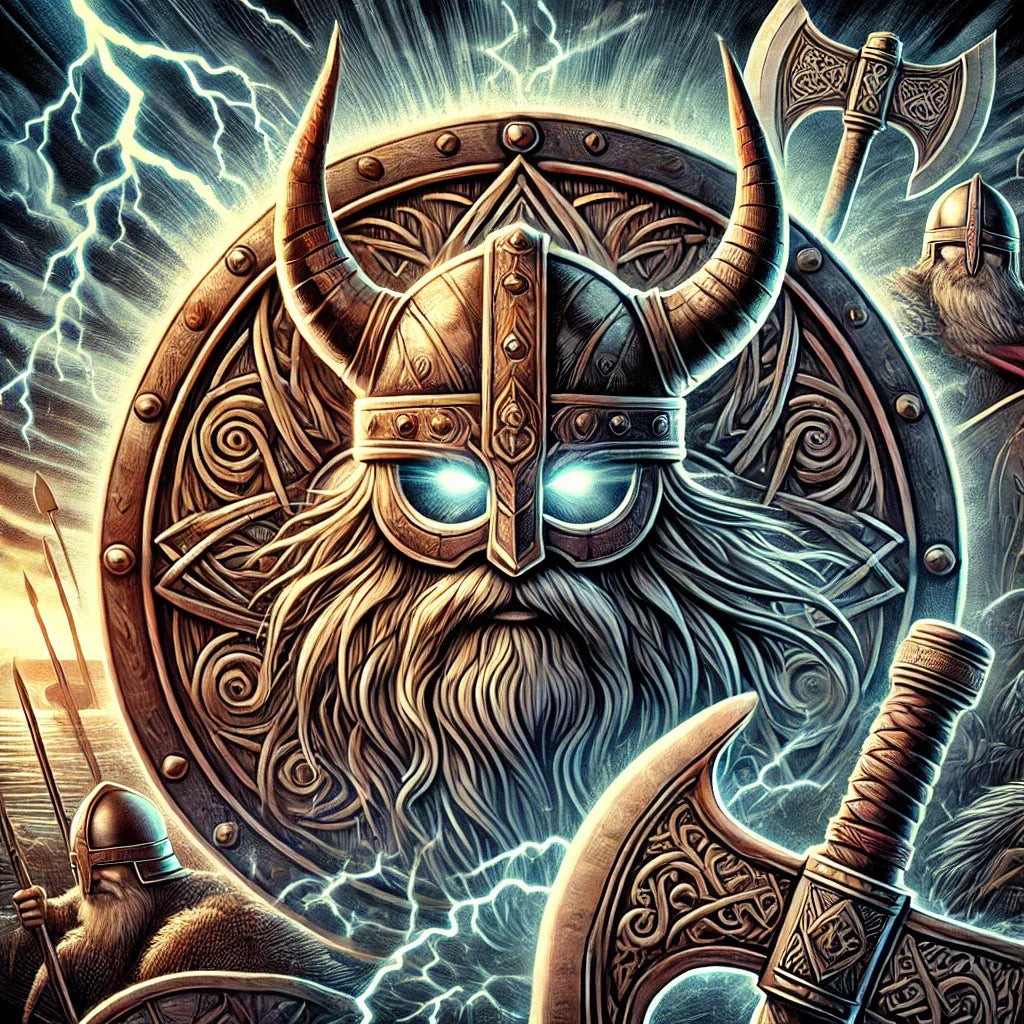The Helm of Awe: What Does This Viking Symbol Really Mean?

The Helm of Awe, known in Old Norse as Ægishjálmur, is one of the most powerful and mysterious symbols in Norse mythology. It was believed to grant protection, courage, and invincibility to those who carried or wore it. Viking warriors saw this symbol as more than just an artistic design—it was a source of strength, magic, and divine power. But what does the Helm of Awe really mean? Was it just a superstition, or did it hold deeper significance in Viking culture? Let’s explore the history, symbolism, and lasting impact of this legendary Norse emblem.
The Origins of the Helm of Awe
The Helm of Awe dates back to ancient Norse sagas and rune magic, where it was described as a powerful symbol of divine protection and mental fortitude. The name "Ægishjálmur" comes from two Old Norse words: "Ægir," meaning awe or terror, and "hjálmur," meaning helm or helmet. This suggests that the Helm of Awe was meant to strike fear into enemies while shielding the bearer from harm.
Unlike a traditional metal helmet, the Helm of Awe was a magical symbol, often drawn onto shields, armor, or even the foreheads of warriors before battle. It was believed to form an invisible protective barrier, making the wearer untouchable in combat. Warriors who bore this symbol were said to be infused with unstoppable courage and strength, ensuring victory over their foes. Much like the Tree of Life, which symbolized balance, strength, and divine connection, the Helm of Awe represented an unbreakable will and the power to overcome any challenge. You can learn more about Viking spiritual symbols in our article on Tree of Life Necklace Meaning and Significance.
The Symbolism Behind the Helm of Awe
The design of the Helm of Awe consists of eight tridents radiating outward from a central point, resembling a spiked wheel or sunburst. This unique formation was not just decorative; it was specifically constructed to channel energy outward, creating a spiritual shield of defense around the wearer. In Norse culture, runes were not just letters but powerful symbols that carried magic and meaning. The Helm of Awe was deeply connected to runic magic, believed to strengthen the mind, protect against physical harm, and ensure victory in battle.
Runes and symbols like the Helm of Awe were often carved onto shields, weapons, and amulets, ensuring their magic was carried into every battle. It was thought that by drawing the Helm of Awe on their skin or armor, Vikings could invoke the power of Odin himself, gaining his wisdom, foresight, and ability to manipulate fate. This practice of carrying powerful symbols is reflected in Norse jewelry, where Vikings wore rings, pendants, and amulets engraved with sacred runes for protection and strength. If you want to explore more about Viking symbols in jewelry, check out our article on Top 5 Viking Rings and Their Norse Symbols.
How Viking Warriors Used the Helm of Awe
For Viking warriors, battle was as much a test of mental resilience as it was of physical strength. They believed that confidence and a fearless mind were just as important as swords and axes. The Helm of Awe was seen as a psychological weapon, giving its bearer a fearless mindset and an intimidating presence on the battlefield. This belief made the symbol a powerful tool for overcoming fear and doubt, both in war and in daily life.
Some Vikings would paint or tattoo the Helm of Awe onto their bodies, believing that it would shield them from harm and make them invincible in combat. Others would carve it onto their weapons or shields, ensuring that every swing of their blade carried the strength of divine protection. The Vikings saw symbols as more than mere decoration—they were spiritual tools that could shape reality and turn the tides of fate.
The Helm of Awe in Modern Viking Culture
Today, the Helm of Awe remains one of the most recognizable Norse symbols, worn by those who admire Viking culture, mythology, and warrior strength. It is often seen in tattoos, jewelry, and artwork, representing fearlessness, resilience, and divine protection. Many people wear the symbol as a reminder to face life’s challenges with courage and determination, just as the Vikings did centuries ago.
While the symbol was originally used for protection in battle, it has evolved into a representation of personal strength, mental clarity, and spiritual fortitude. Just as the Vikings believed in using the Helm of Awe to protect themselves from physical danger, many people today use it as a symbol of spiritual protection, warding off negativity and self-doubt.
Carry the Strength of the Helm of Awe
The Viking Age may have ended, but the power of the Helm of Awe continues to inspire those who seek strength, resilience, and fearlessness. Whether you wear it as a piece of jewelry, a tattoo, or simply keep it as a personal emblem, the symbol serves as a reminder that true power comes from within. The Vikings believed that by embracing their fears and facing their challenges head-on, they could achieve greatness and honor.
If you want to carry the power of this legendary symbol, explore our Helm of Awe Viking Jewelry Collection. Each piece is crafted to capture the essence of Norse strength and protection, allowing you to carry the wisdom of the Vikings wherever you go.
Conclusion
The Helm of Awe is more than just an ancient Viking symbol—it is a representation of courage, protection, and the fearless warrior spirit. From its origins in runic magic to its use by Viking warriors, this powerful emblem has stood the test of time. Whether you see it as a symbol of divine protection, inner strength, or Norse heritage, the Helm of Awe continues to inspire and empower those who wear it.




